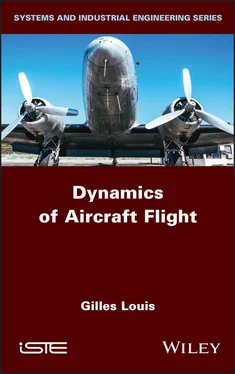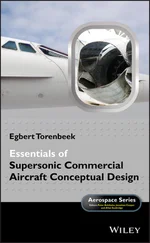8 Chapter 9Figure 9.1. Rotation axis Δ. For a color version of this figure, see www.iste.co...Figure 9.2. Quaternion trihedrons
1 Cover
2 Table of Contents
3 Title Page Series Editor Jean-Paul Bourrières
4 Copyright First published 2022 in Great Britain and the United States by ISTE Ltd and John Wiley & Sons, Inc. Apart from any fair dealing for the purposes of research or private study, or criticism or review, as permitted under the Copyright, Designs and Patents Act 1988, this publication may only be reproduced, stored or transmitted, in any form or by any means, with the prior permission in writing of the publishers, or in the case of reprographic reproduction in accordance with the terms and licenses issued by the CLA. Enquiries concerning reproduction outside these terms should be sent to the publishers at the undermentioned address: ISTE Ltd 27-37 St George’s Road London SW19 4EU UK www.iste.co.uk John Wiley & Sons, Inc. 111 River Street Hoboken, NJ 07030 USA www.wiley.com © ISTE Ltd 2022 The rights of Gilles Louis to be identified as the author of this work have been asserted by him in accordance with the Copyright, Designs and Patents Act 1988. Any opinions, findings, and conclusions or recommendations expressed in this material are those of the author(s), contributor(s) or editor(s) and do not necessarily reflect the views of ISTE Group. Library of Congress Control Number: 2022932439 British Library Cataloguing-in-Publication Data A CIP record for this book is available from the British Library ISBN 978-1-78630-719-4
5 Foreword
6 Introduction
7 Begin Reading
8 Glossary
9 List of Abbreviations
10 References
11 Index
12 End User License Agreement
1 v
2 iii
3 iv
4 xi
5 xiii
6 xiv
7 xv
8 xvi
9 1
10 2
11 3
12 4
13 5
14 6
15 7
16 8
17 9
18 10
19 11
20 12
21 13
22 14
23 15
24 16
25 17
26 18
27 19
28 21
29 22
30 23
31 24
32 25
33 26
34 27
35 28
36 29
37 30
38 31
39 32
40 33
41 34
42 35
43 36
44 37
45 38
46 39
47 40
48 41
49 42
50 43
51 44
52 45
53 46
54 47
55 48
56 49
57 50
58 51
59 52
60 53
61 54
62 55
63 56
64 57
65 58
66 59
67 60
68 61
69 62
70 63
71 64
72 65
73 66
74 67
75 68
76 69
77 70
78 71
79 72
80 73
81 74
82 75
83 76
84 77
85 78
86 79
87 80
88 81
89 82
90 83
91 84
92 85
93 86
94 87
95 88
96 89
97 90
98 91
99 92
100 93
101 94
102 95
103 96
104 97
105 98
106 99
107 100
108 101
109 102
110 103
111 104
112 105
113 107
114 108
115 109
116 110
117 111
118 112
119 113
120 114
121 115
122 116
123 117
124 118
125 119
126 120
127 121
128 122
129 123
130 124
131 125
132 126
133 128
134 129
135 130
136 131
137 132
138 133
139 134
140 135
141 136
142 137
143 139
144 140
145 141
146 142
147 143
148 144
149 145
150 146
151 147
152 148
153 149
154 150
155 151
156 152
157 153
158 154
159 155
160 156
161 157
162 158
163 159
164 160
165 161
166 162
167 163
168 164
169 165
170 166
171 167
172 169
173 170
174 179
175 173
176 174
177 175
178 176
179 177
180 178
181 179
182 180
183 181
184 182
185 183
186 184
Series Editor
Jean-Paul Bourrières
Dynamics of Aircraft Flight
Gilles Louis

First published 2022 in Great Britain and the United States by ISTE Ltd and John Wiley & Sons, Inc.
Apart from any fair dealing for the purposes of research or private study, or criticism or review, as permitted under the Copyright, Designs and Patents Act 1988, this publication may only be reproduced, stored or transmitted, in any form or by any means, with the prior permission in writing of the publishers, or in the case of reprographic reproduction in accordance with the terms and licenses issued by the CLA. Enquiries concerning reproduction outside these terms should be sent to the publishers at the undermentioned address:
ISTE Ltd
27-37 St George’s Road
London SW19 4EU
UK
www.iste.co.uk
John Wiley & Sons, Inc.
111 River Street
Hoboken, NJ 07030
USA
www.wiley.com
© ISTE Ltd 2022
The rights of Gilles Louis to be identified as the author of this work have been asserted by him in accordance with the Copyright, Designs and Patents Act 1988.
Any opinions, findings, and conclusions or recommendations expressed in this material are those of the author(s), contributor(s) or editor(s) and do not necessarily reflect the views of ISTE Group.
Library of Congress Control Number: 2022932439
British Library Cataloguing-in-Publication Data
A CIP record for this book is available from the British Library
ISBN 978-1-78630-719-4
When Gilles invited me to preface his book on the mechanics of flight systems, I immediately accepted. My interest in his work is not only the result of our collaboration on multiple subjects and technical projects over the past 12 years but is also based on the way he has dealt with the subject.
This book is not simply a collection of mathematical formulas; it is the fruit of experience coupled with an ability to conceptualize. Following a general guideline, each step is described in great detail, with a number of concrete examples to which mathematical formulations are added. The latter are of course the fundamental elements leading to the sizing and optimization of the systems.
The mathematics used in this context is not accessible without prior understanding. It is therefore out of a pedagogical spirit that Gilles first takes up all the definitions of the mathematical elements: lift, drag, aerodynamic focus and so on.
In conclusion, this book offers a global vision of what flight mechanics is and it is therefore of great interest to all engineers and scientists who are called upon to work in this field.
Serge ZANINOTTI
February 2022
What characterizes the mechanics of flight in relation to other branches of rational mechanics is that, among the various forces present, the aerodynamic forces intervene, and they themselves result from the relative movement of the aircraft in relation to the surrounding atmosphere. It is therefore essential to define the characteristics of the atmosphere.
The notion of a standard atmosphere meets this need. Air is considered an ideal gas, represented by the three state parameters (pressure, density and temperature), heavy and still.
Just as it is necessary to define the atmosphere in which the airplane is traveling, so it is necessary to be able to measure the velocity on board the aircraft, especially the velocity in relation to the air.
Читать дальше













